5 Practical Tips for Kids to Reduce HFMD Risk in Class
Hand, Foot and Mouth Disease (HFMD) spreads easily in classrooms through close contact and shared items. The good news: simple daily habits can greatly lower the risk. Below are practical, kid-friendly actions you can teach and remind your child to do at school. We’ve also included what to do if a classmate is unwell, and a simple solution using BerryC Sanitizer Spray for both hands and surfaces. These tips don’t replace your doctor’s advice, but they help keep little hands (and desks!) cleaner and safer.
5 DIY Habits Kids Can Do in Class
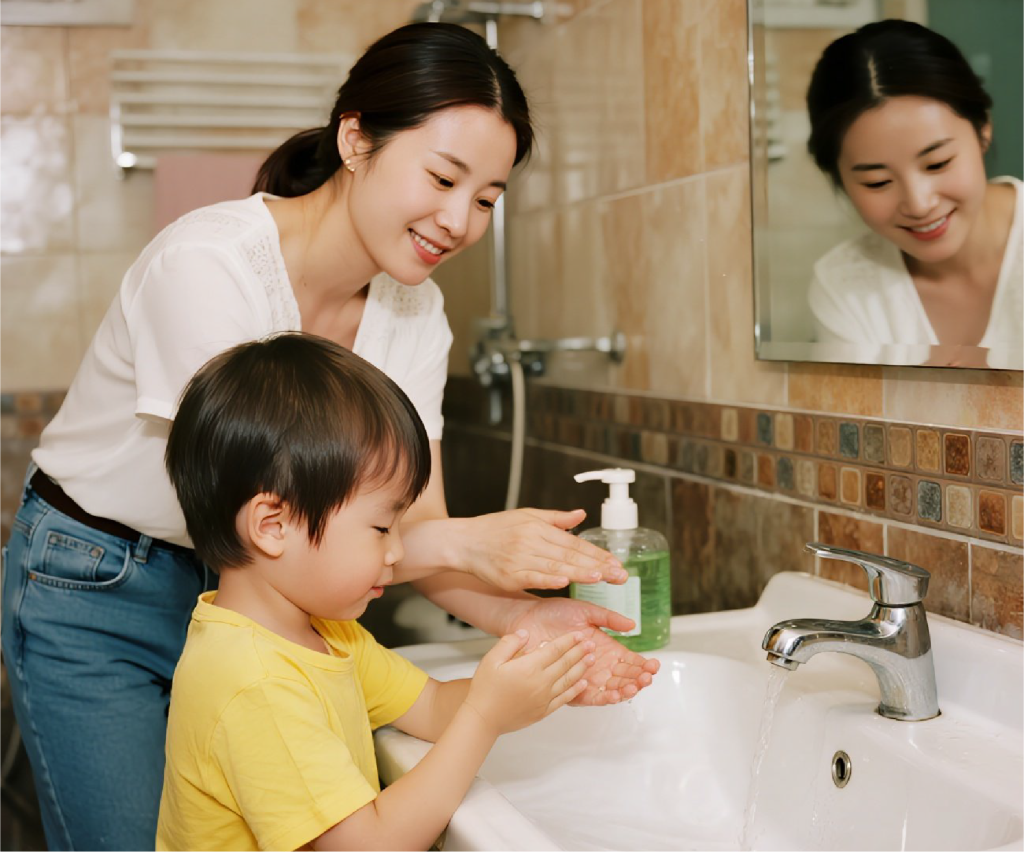
1) Clean hands at key moments
- Before eating or touching the face, after toilet breaks, after group work, and after touching shared items.
- If soap and water aren’t available, use a hand sanitiser and rub until dry (don’t forget thumbs and fingertips).
- Keep nails short so germs have fewer places to hide.
- Remind: “Clean hands = healthy friends.”
2) Don’t touch the T-zone (eyes, nose, mouth)
- Teach the rule: “Hands off face unless just cleaned.”
- If the face is itchy, use a clean tissue—not fingers.
- After coughing or sneezing, clean hands right away.
- Make it a game: count to 20 while rubbing in sanitiser so it becomes a habit.


3) No sharing of personal items
- Avoid sharing water bottles, utensils, snacks, towels, lip balm, or masks.
- Label your child’s items clearly so they don’t get mixed up.
- Pack spare tissues and a spare mask so sharing isn’t needed.
- Teach: “What’s mine is mine—so germs don’t combine.”
4) Desk-top and shared items check
- Wipe or sanitise the desk area before snack time or activities.
- Be extra careful with high-touch items (scissors, rulers, crayons, tablets).
- If something looks dirty, clean it first, then use it.
- Remind: “Quick spray, quick wipe, quick win.”
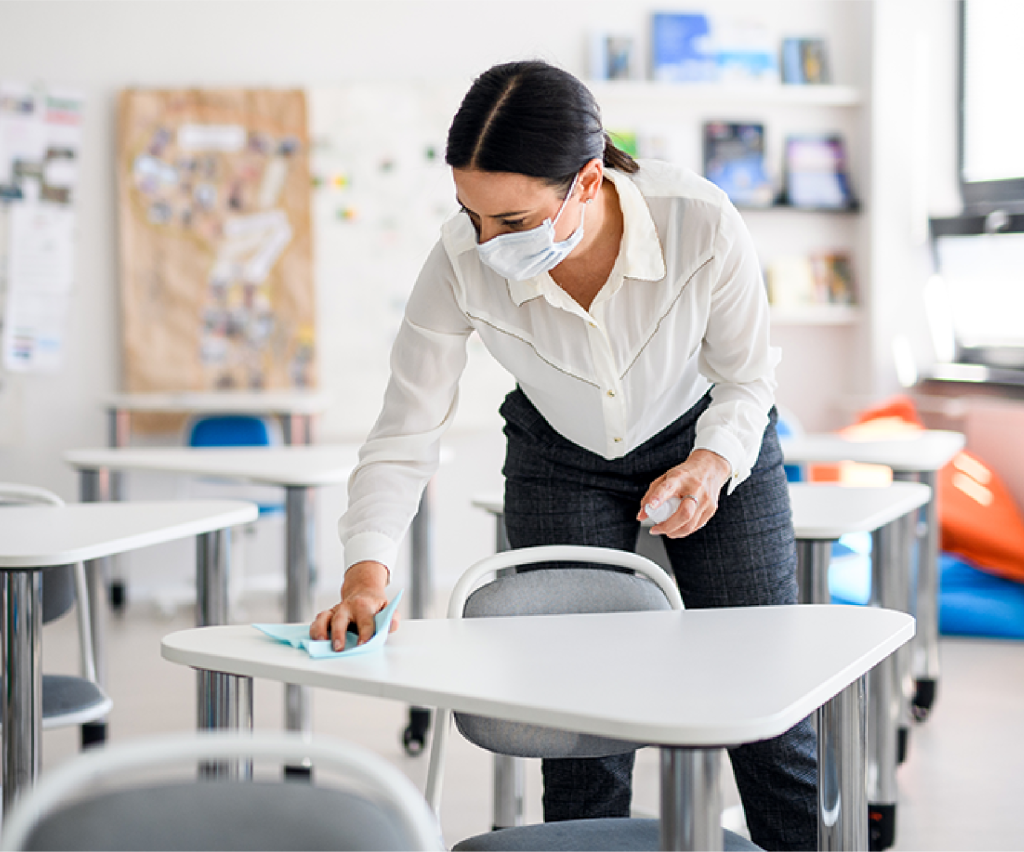
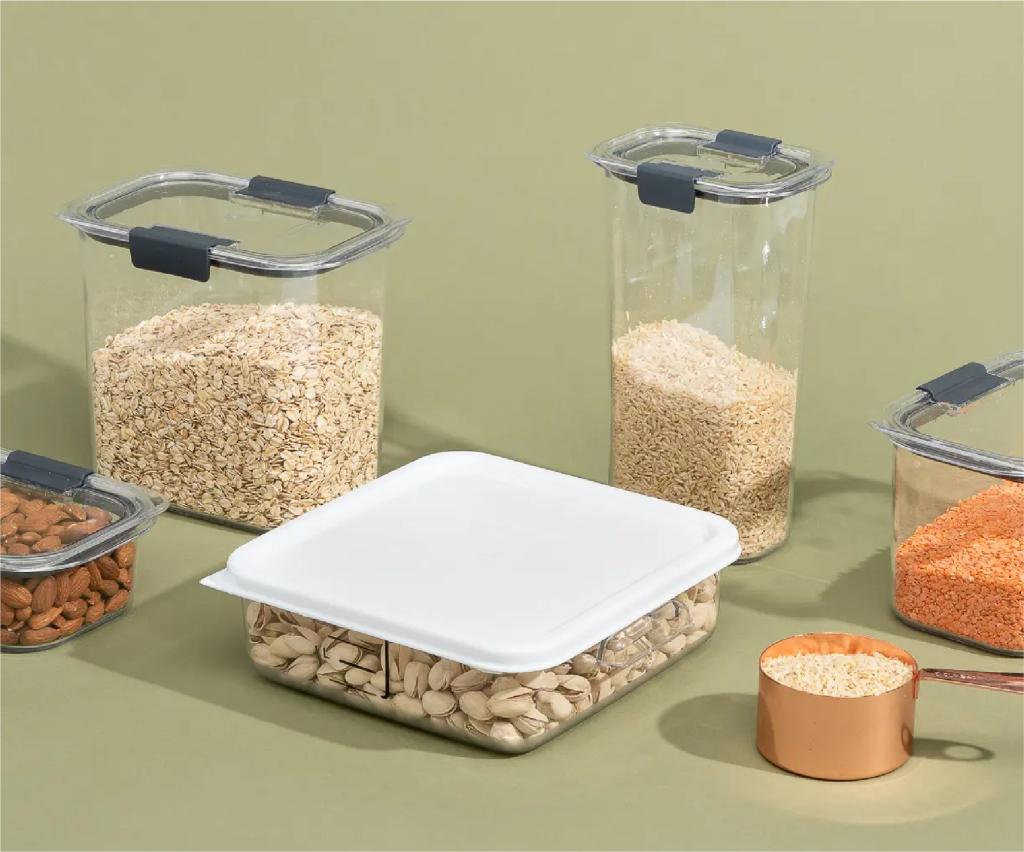
5) Smart snack & drink routine
- Wash/sanitise hands before eating or drinking.
- Keep snacks in sealed containers and bottles capped when not in use.
- Don’t place food directly on the desk—use a clean tissue or container lid.
- After eating, clean hands again and tidy up crumbs to avoid attracting germs.
If a Classmate Beside Them Is Coughing or Has Flu-Like Symptoms
- Keep a polite distance and avoid face-to-face chatting at close range.
- Put on a mask if available, especially during group work.
- Avoid sharing stationery or snacks with the sick classmate.
- Clean hands after any close interaction or shared activity.
- Ask the teacher for better airflow (open windows/door if possible).
- Tell the teacher quietly: “My friend seems unwell.” Let the adult handle it.
If Your Child Starts Feeling Unwell in Class
- Tell the teacher immediately—don’t “tahan” through the day.
- Put on a mask and limit close contact with friends.
- Clean hands after coughing, sneezing, or touching the face.
- Rest in the school’s designated area while a parent/guardian is contacted.
- Follow up with a clinic visit if symptoms suggest HFMD (fever, mouth ulcers, rashes on hands/feet).
- Stay home to recover fully and protect classmates before returning.
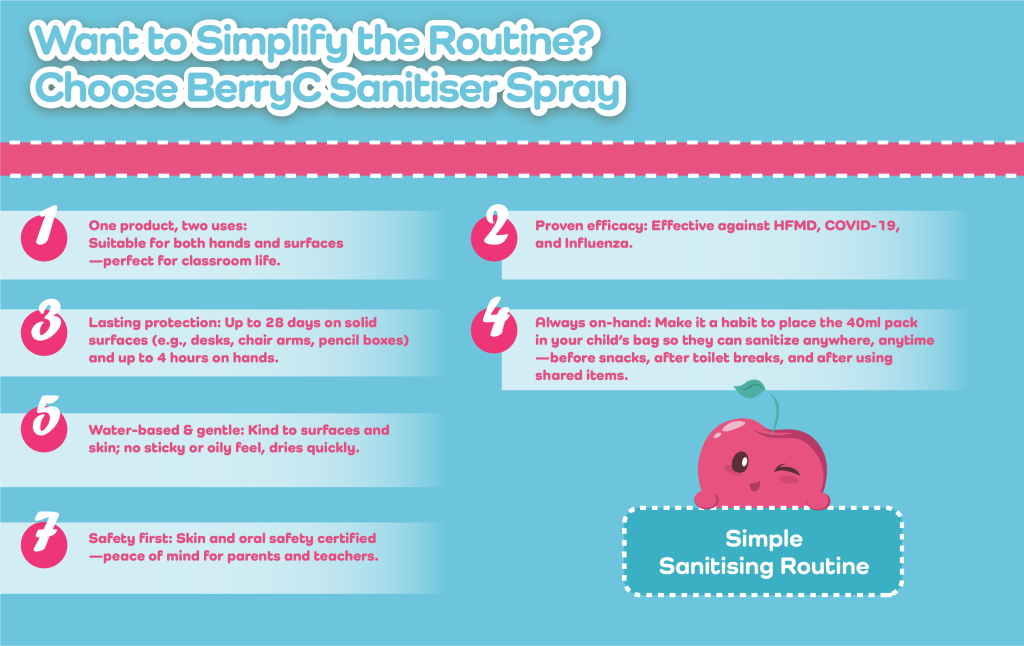
Quick how-to (kids can follow):
For hands: Spray and rub all over hands (palms, backs, between fingers, thumbs, fingertips) until dry.
For surfaces: Lightly mist the desk area or shared item; allow it to air-dry. Use before snack time or group work.
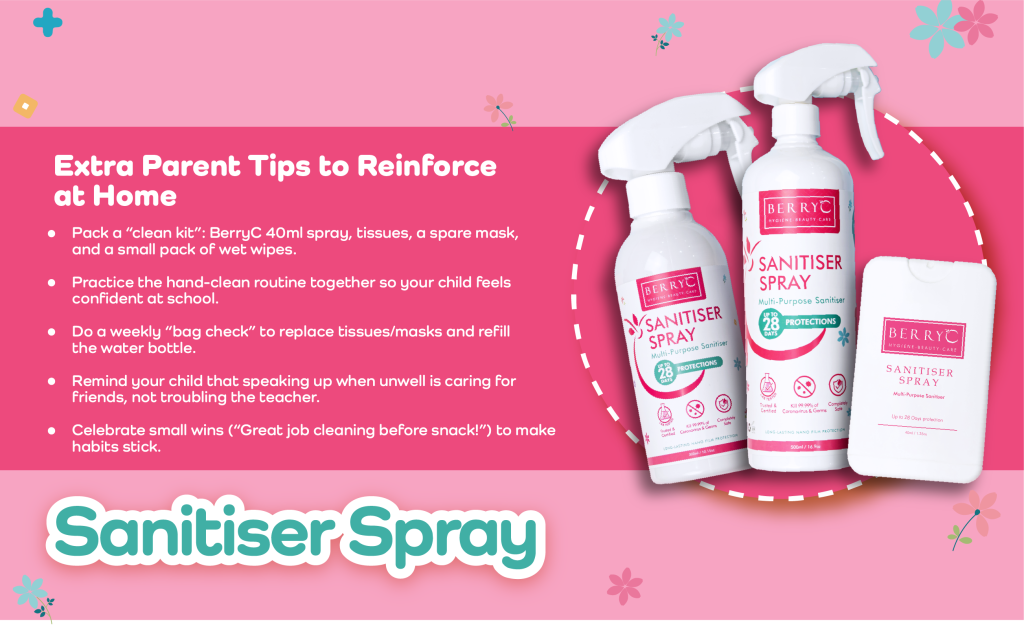
Summary
Classrooms are busy spaces, so small daily habits can make a big difference against HFMD. Teach your child to clean hands at key times, avoid sharing personal items, keep their desk tidy, and speak up when they or a classmate feel unwell. If you prefer a simpler routine, BerryC Sanitizer Spray covers both hands and surfaces, offers long-lasting protection (up to 28 days on solid surfaces and 4 hours on hands), and is water-based, gentle, and safety certified—effective against HFMD, COVID-19, and Influenza. Pop the 40ml bottle into their bag so protection is always within reach.





